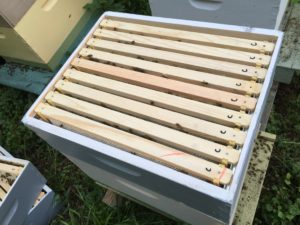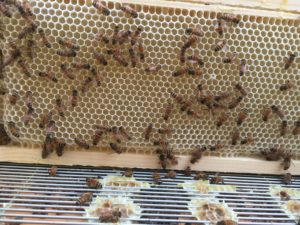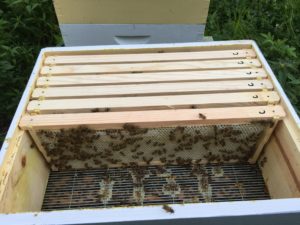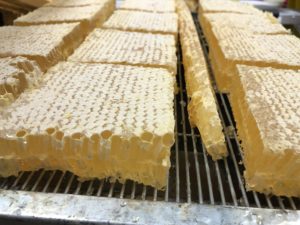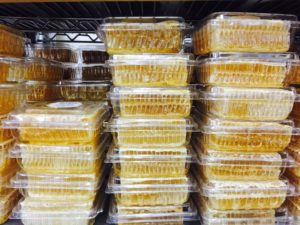 COMB HONEY is the Goal for 2018 – make more COMB HONEY !!
COMB HONEY is the Goal for 2018 – make more COMB HONEY !!
I had an idea last fall to make it a 2018 goal to produce more comb honey. This is my curious idea for comb honey production for 2018. My idea is to use large primary swarms to effortlessly produce comb. And then, rather serendipitously, I stumbled upon, an old ABJ article from 2003 that gave me even more information on the subject. Below are some of the details.
Short and sweet, I am putting this 2018 goal out there this year, will update you on how it goes with a process report or two.
The idea is to hive a swarm on foundation only – no drawn comb what-so-ever– with an excluder over the brood nest area and two comb honey supers over that.
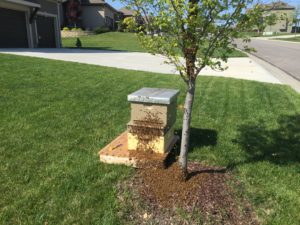
It will be essential: Use only large primary swarms. I will not using small swarms or 2ndary swarms that may have any virgin queens. Here’s the concept of how this works:
- the swarm will occupy the entire hive and begin drawing comb at once.
- to make sure there is not drawn comb anywhere in the hive.
Drawn comb would only entice the bees to settle down to building a good brood nest. So, using any drawn comb would be out of the question.
Here’s the concept: If the new hive contains only foundation, then the swarm is eager to build comb throughout the entire hive and not just around the brood area. The bees won’t just be distracted to building comb for brood. They will build it for nectar/honey storage, too. This is the goal for making comb honey for 2018. I’ll let you know how it works out in July 2018.
But first, I’ll need to keep a few comb honey supers on hand – to be prepared and ready. I already have them purchased and put together. Now, I’m ready to prime & paint when the weather warms up. Swarming season for us starts generally around April 10th.
UPDATE 18 May 2018
It’s been a rather slow season for swarms but I have managed to capture a few. The latest being a call from about 4 miles a way yesterday.
The nectar flow is on for May. Pictures below are of a swarm I caught in early May. They have drawn all 10 frames of the new foundation into comb and have it nearly full. I moved the frames into a super with 9-frame spacers in order for the bees to build out the combs further, and to provide stabilization for the frames when they are transported. I added another super of comb honey. I will continue to monitor on a weekly basis for comb building and the need for additional space.
UPDATE 30 August 2018
Supers were pulled in July and stored in a freezer until I was able to get with Kristi Sanderson, our KS State Fair Manager, to begin inspecting, cutting, and labeling. We had a very tough season with nearly 9 weeks of drought in 2018. Happy to report that I harvested 3 supers of comb honey. A fourth super was on a colony that perished sometime in June and that comb was lost. Still, with nearly 110+ containers of comb honey and two dozen pint jars of chunk honey (honey with comb in the jar), it was a great year for me to try this. Next year, we believe it would be much preferable to stick to only 10 frames per medium super and not worry about 9-frame, which might be too much and too thick for the containers. Very happy with the season’s product. 🙂
